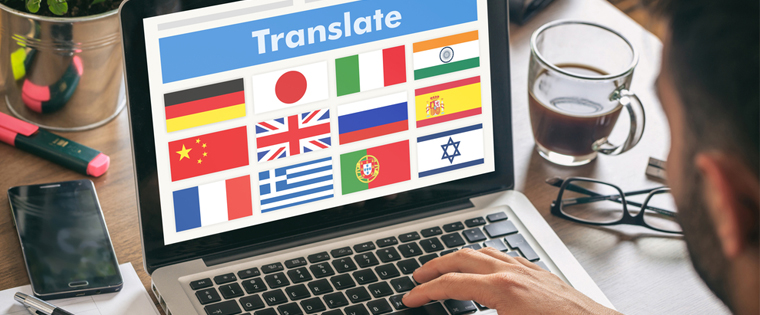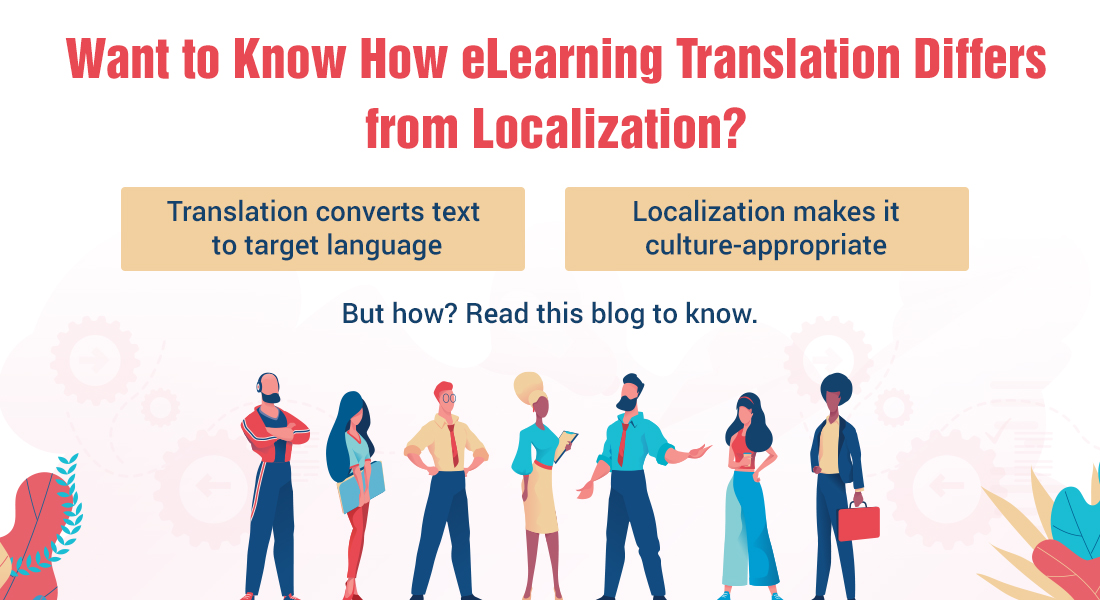Questions to Consider while Localizing Your E-learning Courses

With organizations expanding across the globe, it is increasingly becoming important to provide online training that is tailored specifically for employees belonging to different cultures. Needless to say, learning becomes more meaningful when your employees will be able to relate and engage with the learning content. So, if you’re looking for consistency in your training deliverables, localization is your one-stop solution! But, let us first know:
What is Localization?
E-learning localization involves the adaptation of online courses according to the specific culture of learners. Localization is one step further than translation; it involves the customization of learning content in order to suit the ethnic, geographic, and cultural sensibilities of learners. When you are looking to reach out to a dispersed workforce, eLearning localization cannot be missed. However, the localization process can be complex and lengthy.
How is Localization Different from Translation?
Translation is the process of conveying meaning by changing text from one language to another. Localization is more about how the online content is adapted to make it more relevant for the target audience.
Translation focuses more on the language part and takes a neutral stand toward culture and region. Localization meets the cultural (expressions, symbols, colors, humor, etc.) and functional (address, currency, time, etc.) requirements of employees and organizations, depending on the region they are in and the kind of industry.
Why is Localization Important and How Can It Impact Learning?
Ensures Consistent Message Delivery:
What might be the norm in one country might be offensive in another. When a learner is not able to relate and comprehend the content, the very purpose of the training is lost. For instance, a Chinese sales team is shown how to address their client. They might not approve when they are taught to address clients with their first names instead of their title (Mr. or Miss). In the US calling a person with their first name is an accepted norm whereas in China, it is considered impolite.
Enhances Knowledge Acquisition and Retention:
The effectiveness of the course increases when the course is localized, since employees are able to relate to the content culturally. For instance, a badly translated idiom will dilute the meaning, whereas an appropriately translated idiom will make understanding better.
Learners will be able to acquire and retain knowledge better for performing efficiently on the job. And what happens without localization? The employee will eventually get distracted and lose interest due to the lack of connect with the course.
Fosters an Inclusive Learning Culture:
When an eLearning course is customized to the background of learners, they will find it more valuable than an eLearning course pushed out to the masses and devoid of language and cultural considerations. Learners are more likely to get pulled toward localized eLearning courses to seek what they need and when they need. Localize your eLearning to make your employees feel included and valued, irrespective of where they belong to.
What are the Items that Needs to be Localized in E-learning?
1. Content
If the course involves real-life scenarios and instances, ensure that the content is relevant for the learner. Also, idioms and colloquial examples should be appropriate for the audience. For instance, if you localize a sales course, give examples to show appropriate local and accepted etiquette, that have to be taken into account for client interactions.
2. Visuals
As important it is to localize text, images, and color also need to be considered. For instance, White is considered the symbol of purity and elegance in the Western countries, but in many Asian countries, White is synonymous to mourning.
3. Standards
Standards such as date, time, currency, units of measurement, etc., need to be localized for better relativity. For instance, In India, date is written in the DD-MM-YYYY format but the internationally accepted format is Month-Date-Year (MM-DD-YYYY). Time, currency, and units of measurements will change as region changes.
4. GUI
The Graphic User Interface needs to be customized to meet the needs of your multilingual employees. For instance, languages such as Hebrew and Arabic are read from right-to-left (RTL), unlike English which is left-to-right; therefore, the interface should be designed accordingly.
Additionally, the interface should be accountable for the expansion and contraction of content after translation, since some languages are more verbose than others. For instance, when content is translated from English to Mandarin, the text contracts by 20%; it expands by 40% when translated to German.
What about Native Experts for Better Accuracy?
Preparing an eLearning course for audiences belonging to different cultures and regions is a daunting and tedious process. Also, a lot of parameters have to be taken into account while ensuring the relevance and quality of the course. So, instead of taking risks, hiring subject matter experts and linguists to maintain the accuracy of the course is an apt option. These native experts hold the required skills and knowledge to ensure the appropriate use of terms and cultural variations in the localized version.
The localization of your online courses can go a long way in imparting training to your diverse workforce effectively. The answers to the questions discussed will help you localize your eLearning courses in a hassle-free and efficient manner. Want to know about the localization process and its best practices? Keep following this space for more.




![Do You Know What eLearning Localization Is All About? [Infographic]](https://blog.commlabindia.com/hubfs/Imported_Blog_Media/eLearning-localization-insights-infographic-1.jpg)
![eLearning Localization: What, Why and How? [Infographic]](https://blog.commlabindia.com/hubfs/Imported_Blog_Media/translations.jpg)